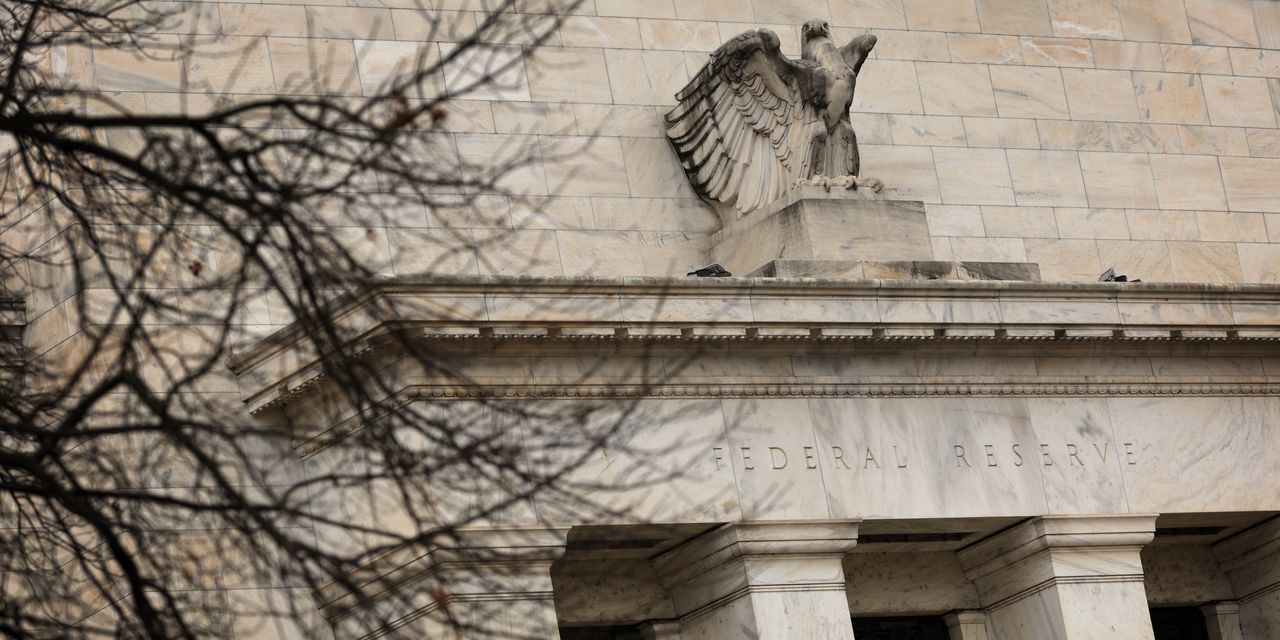Banks in the U.S. in the first quarter continued to tighten the availability of credit amid tumbling demand for loans, particularly within commercial real estate, according to a quarterly survey.
According to the Federal Reserve’s Senior Loan Officer Opinion Survey on Bank Lending Practices, 46% of banks tightened credit for the widely watched commercial and industrial (C&I) loans in the first quarter for large and middle-market firms or companies with annual sales of above $50 billion. That’s up from 44.8% in the prior survey and the highest since the third quarter of 2020. Banks received the survey on March 27, and responses were due by April 7, and included data from 65 domestic banks.
Credit standards have tightened for a year as the federal-funds rate climbed from around zero percent to a range of 5% to 5.25%. The Fed’s latest survey comes after Silicon Valley Bank’s shutdown on March 9, Signature Bank’s collapse on March 12, and Credit Suisse’s takeover by
UBS
(UBS) on March 18
Other indicators also show credit tightening. The Dallas Fed Banking Conditions Survey reported a sharp increase in credit terms in March. One in 10 small-business owners said in April that their last loan was harder to get than the previous one, according to the National Federation of Independent Business. The National Association of Credit Management said its April’s index for “approvals of new credit plummeted and is now well into contraction territory.”
“I just don’t see how it’s possible, especially post
SVB,
that we avoid a recession in response to the interest-rate shock therapy we have been treated with,” wrote Peter Boockvar, economist and chief investment officer at Bleakley Advisory Group, in a report after the survey results came out.
A major concern ahead of the report was the demand for commercial real estate loans, as office occupancy rates remain low. Banks reported demand at a record low across the board—from loans for multifamily, nonresidential, to commercial and land development purposes—and below levels observed during any crisis.
“Developers appear exceptionally wary to begin new projects in the face of slowing demand,” wrote Michael Reynolds, vice president of investment strategy at Glenmede, a wealth management firm.
Small banks are sitting on tons of nonfarm nonresidential property loans. According to another Fed report called H.8. released Friday, small banks as of the week ending April 26, have offered about $1.2 trillion of loans for hotels, motels, dormitories, and other non-residentials, up from $967 billion before the pandemic.
Plus, “it’s no secret there are a lot of office loans coming due in 2023 and 2024,” said Bain Rumohr, a senior director at Fitch Ratings who covers banks and nonbanks.
Also, fewer businesses are inquiring about the availability and terms of new credit lines or increases in existing lines, according to the Fed’s survey on Monday.
Amid the drought in demand, banks said they expect to tighten terms for the remainder of 2023 across all loan categories due to a deterioration in the credit quality of their loan portfolios and in borrowers’ collateral values as well as a reduction in risk tolerance.
Write to Karishma Vanjani at [email protected].
Read the full article here


